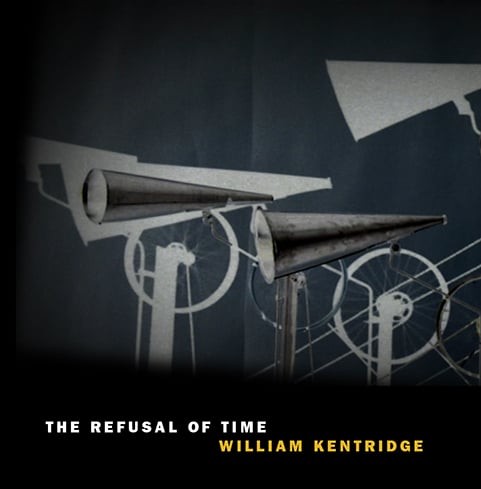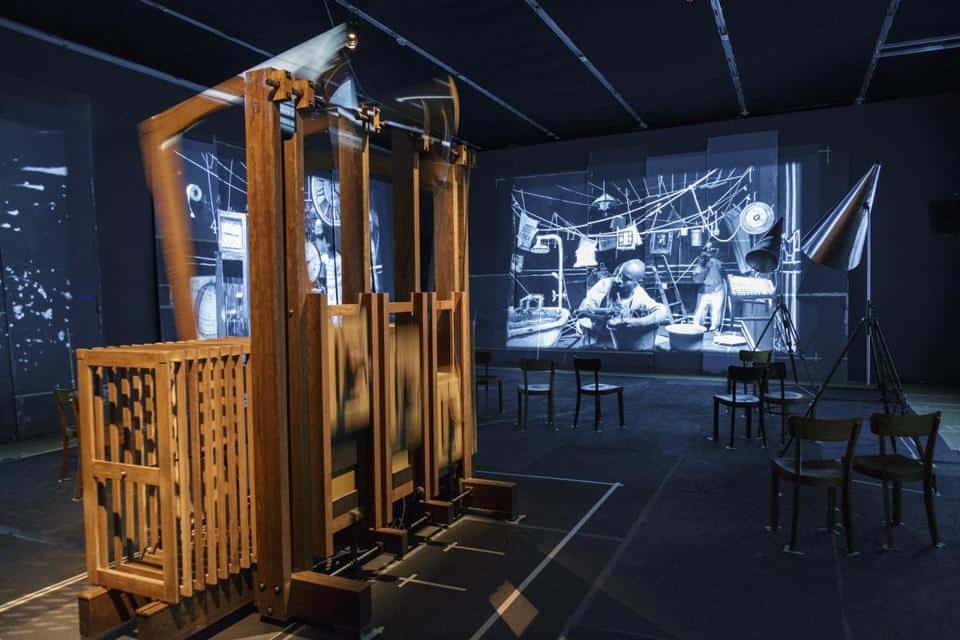A joint acquisition by the Met and SFMOMA, William Kentridge’s five-channel video installation ‘The Refusal of Time’ (2012) is a thirty-minute meditation on time and space, the complex legacies of colonialism and industry, and the artist’s own intellectual life. It will be running until May 11, 2014.

image: ‘The Refusal of Time’ (detail), 2012. Five-channel video with sound, 30 min, with megaphones and breathing machine (“elephant”). Jointly owned by The Metropolitan Museum of Art, New York, and the San Francisco Museum of Modern Art.
The ‘Refusal of Time’ is a collaboration with Peter Galison, Catherine Meyburgh, and Philip Miller, and jointly owned by The Metropolitan Museum of Art, New York, and the San Francisco Museum of Modern Art. It was produced by Marian Goodman Gallery, New York and Paris; Lia Rumma Gallery, Naples and Milan; and Goodman Gallery, Johannesburg and Cape Town; and originally commissioned by Carolyn Christov-Bakargiev for dOCUMENTA (13), Kassel, 2012.
Kentridge’s recent interest in the nature of time was given focus through the work of Peter Galison, a Harvard-based historian of science. Galison studied a 1905 paper on relativity in which Albert Einstein hypothesized that, due to the delay in signals relayed via telegraph wire, peripheral railway stations synchronized on a centralized clock were forever fated to operate seconds behind schedule. Einstein’s nascent theories about the relativity of time converged with French mathematician Henri Poincaré’s development, as president of the Bureau des Longitudes, of global time zone maps at the dawn of the twentieth century. Both scientists faced the radical idea, in a newly industrialized and interconnected world, that time is not absolute but relative and resistant to control.

image: John Kennard
William Kentridge, ‘The Refusal of Time’
from www.bostonglobe.com
William Kentridge, ‘The Refusal of Time’
from www.bostonglobe.com
At the center of the installation is a moving sculpture—the “breathing machine” or “elephant”—an organ-like automaton with a pumping bellows. Plans from the 1870s for copper pneumatic tubes under the streets of Paris that would pump regular bursts of air to calibrate the city’s clocks reminded Kentridge of a passage from Charles Dickens’s novel Hard Times (1854). Dickens describes a factory machine moving “monotonously up and down, like the head of an elephant in a state of melancholy madness”—a metaphor for the often convulsive developments in science and industry during the modern era and a reminder of the vain impulse to control time.
Production Credits
Music and Soundscape: Philip Miller
Video: William Kentridge and Catherine Meyburgh
Choreography: Dada Masilo
Dramaturge: Peter Galison
Design: William Kentridge and Sabine Theunissen
Movement Direction: Luc de Wit
Costume Design: Greta Goiris
Machine Design: Jonas Lundquist and Sabine Theunissen
Megaphones: Christoff Wolmarans and Louis Olivier
Lighting Design: Urs Schoenebaum
Sound Design and Mix: Gavan Eckhart
Music and Soundscape: Philip Miller
Video: William Kentridge and Catherine Meyburgh
Choreography: Dada Masilo
Dramaturge: Peter Galison
Design: William Kentridge and Sabine Theunissen
Movement Direction: Luc de Wit
Costume Design: Greta Goiris
Machine Design: Jonas Lundquist and Sabine Theunissen
Megaphones: Christoff Wolmarans and Louis Olivier
Lighting Design: Urs Schoenebaum
Sound Design and Mix: Gavan Eckhart
Text from



